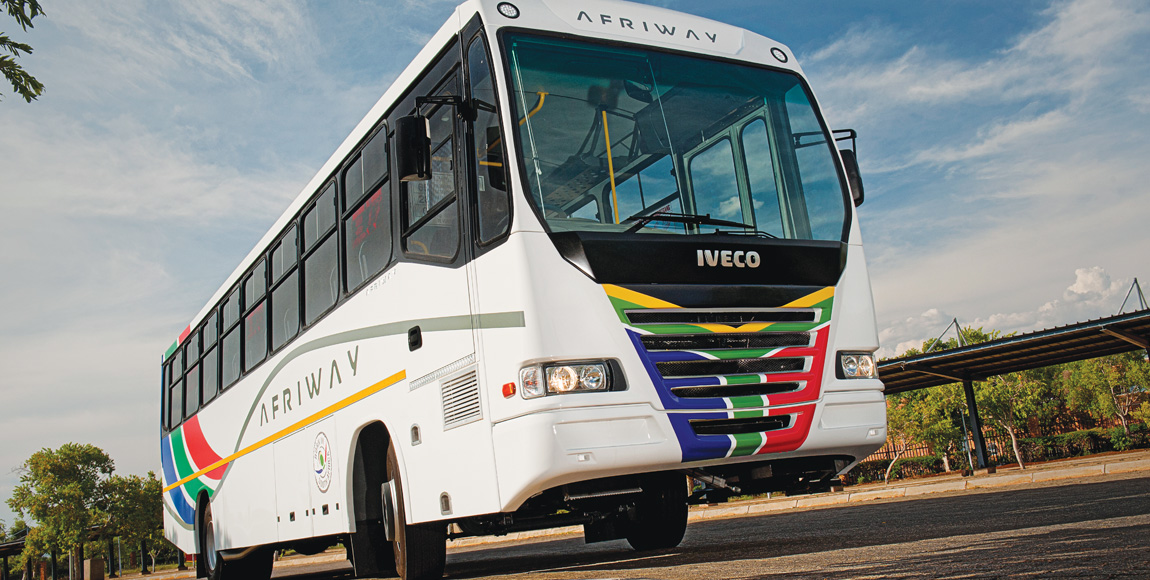Safety first on the long road

Bus operators and drivers are responsible for the lives of the commuters. Improving driving behaviour and undertaking regular vehicle maintenance could reduce the number of fatalities caused by bus-related accidents. MARISKA MORRIS reports
Bus drivers face the tremendous responsibility of ensuring that commuters arrive safely at their destinations. For long-distance bus or coach drivers, the pressure of this responsibility is increased with the challenges of travelling long distances, such as fatigue. However, the South African luxury coach sector has a respectable safety record, according to Arrive Alive.
“The sector has an excellent safety record underpinned by regulatory standards and operating procedures. The safety record of this sector is, therefore, comparable to the best in the world. South Africa is renowned for having among the best quality national road networks in the developing world,” the organisation notes.
“The top luxury coach operators all have a policy where safety is non-negotiable. Safety policy, in all cases, covers the full range of issues involved in safety. There is a strong focus on driver fitness,” it adds.
The focus on safety in the coach industry is also reflected in the 2017 State of Road Safety Report by the Road Traffic Management Corporation (RTMC).
According to the report, there were 11 437 fatal crashes in 2017 with 14 050 fatalities. Of these crashes, 1,2 percent (or about 137) were caused by buses and bus trains. Meanwhile, minibus taxis caused 961, or 8,4 percent of fatal accidents in South Africa in 2017.
While the industry is involved in very few fatal accidents, these incidents often have a high fatality rate.
In September 2018, ten people were killed and 23 sustained injuries when a bus travelling from Harare, Zimbabwe, to Gauteng overturned on the N1. Just a few days before this, 11 people died when a bus from Zambia overturned in Mokopane, Limpopo, on its way to Gauteng.
The RTMC estimates that the human factor plays a significant role in 91 percent of fatal accidents. Reducing the number of accidents should be a priority for bus operators. The first step in achieving improved safety is ensuring bus drivers are adhering to traffic regulations, are not driving distracted, under the influence or tired, and have a vehicle that is safe and functional.
Arrive Alive quotes Barloworld Transport in an interview: “The Cape Town route from Johannesburg is always high risk, due to the long straight roads. In these circumstances fatigue can play a major role. With the more mundane, straight roads, the driver does not have to actively drive for long periods of time, but is cruising at 80 km/h in the highest gear.”
During this time, drivers are more likely to fall asleep or become distracted. Similar methods used to avoid fatigue among truck drivers can be applied to bus drivers. For example, operators can ensure that there are two drivers to relieve each other during the trip. The route can also be planned to allow frequent breaks (something the commuters will appreciate as well).
Among its ten rules for best practice among bus drivers, the Southern African Bus Operators Association (Saboa) discourages drivers from driving under the influence and using electronic devices like a cellphone. It is also important for the driver to avoid distractions caused by passengers.
Saboa advises drivers to refrain from engaging in conversations with passengers. “Drivers should never allow passengers to distract them or block their view by standing in front of mirrors or any other place that restricts their view while driving.
“Drivers are also encouraged to never exceed the speed limit and to adapt the speed of the vehicle according to the road and traffic conditions. The speed of the vehicle should be reduced at night; when there is poor visibility, for example, during heavy fog or rain; and when there might be pedestrians or animals in or next to the road.
Saboa also encourages drivers to keep a safe following distance and to never overtake unless it is safe to do so – ideally when there are two or more lanes, so that the vehicle is never in the lane of oncoming traffic.
Overtaking is always a high-risk manoeuvre that places the vehicle at risk of a head-on collision. Instead, enough time should be allocated for the trip in case a bus finds itself behind a slow-moving vehicle.
To ensure their drivers refrain from risky behaviour, bus operators can invest in technology, like in-cab cameras and monitoring devices, to monitor the driver’s performance and give feedback on their driving behaviour.
Ctrack notes: “Video material, tracking technology and driver training are extremely effective methods that can positively impact on dangerous overtaking or other related poor driving behaviours. Video material can be very insightful and create real scare tactics through visually harsh realities.”
After considering the driver’s behaviour, it is also important to ensure that the vehicle is in the best possible condition. In addition to ensuring the safety of the commuters, pre- and post-trip inspections will allow operators to identify any required maintenance and reduce potential breakdowns – a big challenge for long-distance operators.
“Operators cover long distances with long stretches in between cities. This becomes a huge challenge in getting quick response times and assistance when they have breakdowns along the way,” says Esaia Taunyane, national bus sales manager at Scania South Africa.
“Poor road conditions, accompanied by the type and volume of luggage carried by passengers, put a strain on the general conditions of the vehicle. Excessive demand and reduced turnaround times put further pressure on the operators in terms of the adequate repair and maintenance of their fleet.”
Operators should establish a maintenance schedule for all vehicles. For example, Public Utility Transport Corporation (Putco), according to its website, has a four-level maintenance plan for its vehicles.
As part of this plan, buses are inspected weekly, bi-weekly or every 2 000 km. A second inspection occurs when the vehicle reaches 10 000 km and includes changing the lubricants and filters. The bus endures a two-day inspection at 60 000 km and a three-day inspection at 120 000 km.
Bus operators are also encouraged to use original parts and to follow the recommendations of the original equipment manufacturer (OEM) on service frequency and replacement of parts. Many OEMs offer their customers maintenance and repair services.
“Operators should align themselves with suppliers that understand their business and are able to provide value in a complete transport solutions approach. This should include repair and maintenance, fleet management and connectivity, finance and insurance as well as driver training,” Taunyane notes.
If the transport operator has an older model coach, it might be worth investing in a newer model and have the added advantage of receiving maintenance and repair services from the OEM.
While the South African coach sector has a respectable safety record, there is always room for improvement and an opportunity to save lives by ensuring commuters reach their destination safely.
Published by
Mariska Morris
focusmagsa




